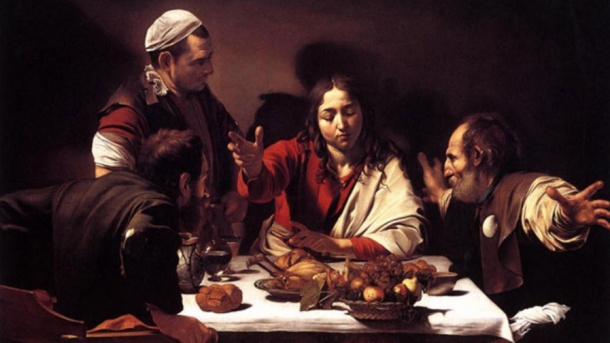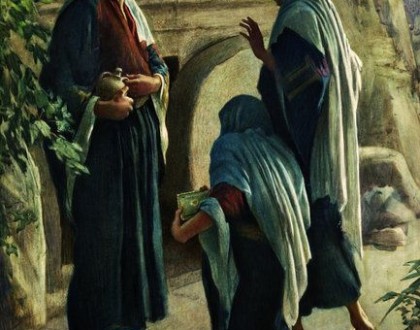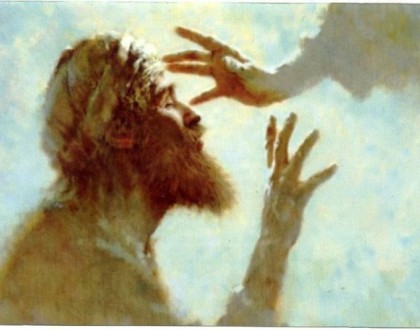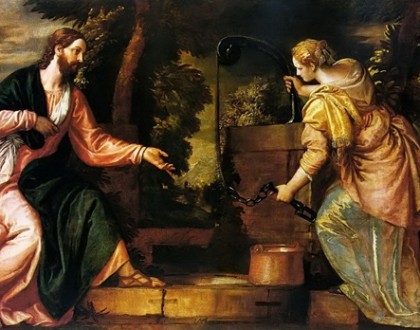Third Sunday of Easter, Year B – April 19, 2015

Third Sunday of Easter, Year B – April 19, 2015
Prime Minister David Cameron was recently interviewed about the significance of Easter; he said the message of Easter is “one of Kindness, Compassion, Hard Work and Responsibility”. Each of those virtues are wonderful and any human or religion on this earth would see them as being worthwhile but the message of Easter is far more powerful and earth-shaking than this watered down version, which sounds more like a political election manifesto than a Gospel Message.
Jesus, who claimed to speak and act on behalf of God and was God in the flesh, rose bodily in the flesh from the dead. Heaven and earth once separated because of sin have now come together in the glorious and victorious body of Jesus. He is no “Ghost” or figment of someone’s imagination, as today’s Gospel reminds us (Luke 24:35-48). That’s the Good News ! We are tired of bad news, our hearts and minds need to hear anew the power of the Easter message once again.
In the 1st reading today, St Peter gives a powerful sermon in the Temple; Jesus is Risen and “Now you must repent and turn to God, so that your sins may be wiped out”. To believe in the Resurrection is to be called to change, to be transformed and God filled.
After His resurrection Jesus appears many times to his disciples and each time some of His closest friends on this earth cannot recognize Him. Sadness blinds Mary Magdalene, doubt blinds Thomas, guilt blinds Peter…and each time Jesus comes to remove the barrier between Him and the person He loves. For the disciples of Emmaus we see its depression and resentment. Jesus walks with them as they walk away from Jerusalem, symbol of the Church. How many people do you know that are walking away from the Church, walking away out of anger, sadness, disappointment, hurt…Jesus walks with them.
The Gospel for today, the Third Sunday of Easter (Year B) is the continuation of the Emmaus story — how God always leads people into an experience of community and table fellowship (Luke 24:36-48). There are several aspects of the story — the appearance of Jesus among the startled and frightened disciples (verses 36-43) and the words about the fulfillment of Scripture and commissioning of the disciples (verses 44-48). Many elements that were present in the Emmaus story are made more explicit.
The Lukan stories also represent the Risen Lord as the One who receives hospitality and food from the disciples. Only after the disciples have extended an invitation to the Stranger to remain with them is it possible for full recognition to take place. They were unable to fully recognize him on the road, but they did recognize him in the breaking of the bread.
In spite of the testimony from the women and the two travelers, the disciples still could not believe their eyes when Jesus appeared before them. Only Jesus could validate the experience and supply its proper understanding. Jesus would first prove their experience was no hoax. Like the appearance to Thomas in John’s Gospel, Jesus showed his wounds and challenged his followers to “touch” him. The experience of the Risen Lord was tactile. Jesus has substance, unlike a ghost. Unlike John 20, Jesus showed his followers his hands and feet (not his hands and side). Luke inferred that Jesus had been nailed in his feet.
Today’s passage also parallels John 21 with the subject of the cooked fish. In John 21:9-14, Jesus was cooking the fish. In Luke, the disciples gave Jesus the cooked fish to eat.
The real heart of the story, however, is not the meal but the quality of the appearance or vision. Jesus appeared as a living, solid form. The Holy and Divine could be found in the tangible. Holiness was not only a matter of ecstasy, touching the transcendent, while leaving the world behind. God reached his people through his creation, not in spite of it. This insight became the foundation of the Church’s self-awareness as the Body of Christ. It also grounded worship in the Church as sacramental. The believer encounters the Risen Christ through the bodily senses. His followers saw, touched, and heard the Risen One. We see, hear, and touch Christ today through the sacraments, through shared witness and service to others.
The Eucharist is a summary of Jesus’ life, a call to lay down one’s life for others. The breaking of bread is also a powerful sign of unity. When we break bread, it is a means of sharing in the body of Christ. Paul says, “Because there is one bread … we who are many are one body, for we all partake of the one bread” (I Corinthians 10:16-17).
It is not only that the person sharing the cup and the broken bread establishes a union with Christ: A further union is established through the “partaking” of the same loaf — the union between all the members of the celebrating community. The unity expressed here is not just a matter of human conviviality; it is a gift given in the breaking of bread, a sharing in the body of Christ. The Eucharist makes the members of the body celebrate their oneness, a oneness experienced on three levels: one in Christ, one with each other, and one in service to the world.
Recent Sermons

Easter Sunday – The Resurrection
April 14, 2017

4th Sunday of Lent Year A – The Man Born Blind
March 27, 2017

3rd Sunday of Lent Year A – The Samaritan Woman at the Well
March 20, 2017

